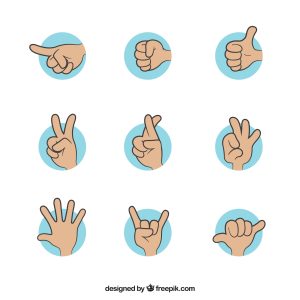8.3 The Role of Ethics and National Culture
Learning Objectives
- Outline the role of ethics in communication.
- Outline the role of national culture in communication.
Examples of Ethical Communication in Business
- Transparent Advertising: Clearly and accurately representing products or services, avoiding false or misleading claims.
- Open Communication with Employees: Providing honest and timely information about company changes and updates.
- Acknowledging Mistakes: Taking responsibility for errors and communicating them openly and honestly.
- Protecting Confidential Information: Safeguarding sensitive data and respecting the privacy of individuals.
- Using Language Ethically: Avoiding language that is biased, discriminatory, or disrespectful.
Cross-Cultural Communication
Culture is a shared set of beliefs and experiences common to people in a specific setting. The setting that creates a culture can be geographic, religious, or professional. As you might guess, the same individual can be a member of many cultures, all of which may play a part in the interpretation of certain words.
The different and often “multicultural” identities of individuals in the same organization can lead to some unexpected and potentially large miscommunications. Miscommunications can arise between individuals of the same culture as well. Many words in the English language mean different things to different people. Words can be misunderstood if the sender and receiver do not share common experiences. A sender’s words cannot communicate the desired meaning if the receiver has not had some experience with the objects or concepts the words describe (Effective communication, 2004).
It is particularly important to keep this fact in mind when you are communicating with individuals who may not speak English as a first language. For example, when speaking with nonnative English-speaking colleagues, avoid “isn’t it?” questions. This sentence construction does not exist in many other languages and can be confusing for nonnative English speakers.
Cultures also vary in terms of the desired amount of situational context related to interpreting situations. People in very high context cultures put a high value on establishing relationships prior to working with others and tend to take longer to negotiate deals. Examples of high-context cultures include China, Korea, and Japan. Conversely, people in low-context cultures “get down to business” and tend to negotiate quickly. Examples of low-context cultures include Germany, Scandinavia, and the United States (Hall, 1976; Munter, 1993).
Finally, don’t forget the role of nonverbal communication. As we learned in the nonverbal communication section, in North America, looking someone in the eye when talking is considered a sign of trustworthiness. In China, by contrast, a lack of eye contact conveys respect.
Gestures

V” for Victory. In North America, this gesture means peace or victory, but in England and Australia, it can be offensive, meaning something like “take this!”
The “OK” Gesture. In North America, it means “OK,” but in France, it implies worthlessness, in Japan, it means money, and in Brazil, Russia, and Germany, it has vulgar meanings.
Thumbs Up. In North America, it means “good job,” but in Germany, it means “one,” and in Japan, “five,” which may cause confusion.
“Hook ’em Horns”. A Texas university symbol, but in Italy, it implies being tricked, and in Brazil and Venezuela, it’s used to ward off evil.
Waving Hand. In North America, it’s a friendly greeting or way to get attention, while in much of Europe, it signals disagreement.
(Axtell, 1998).
It’s easy to see how meaning could become confused, depending on how and when these signals are used. When in doubt, experts recommend that you ask someone around you to help you interpret the meaning of different gestures, that you be sensitive, and that you remain observant when dealing with a culture different from your own.
Exercises
- How can you assess if you are engaging in ethical communications?
- What experiences have you had with cross-cultural communications? Please share at least one experience when this has gone well and one when it has not gone well.
- What advice would you give to someone who will be managing a new division of a company in another culture in terms of communication?
“8.5: The Role of Ethics and National Culture” from Organizational Behavior by LibreTexts is licensed under a Creative Commons Attribution-NonCommercial-ShareAlike 3.0 International License, except where otherwise noted.

